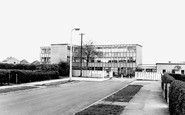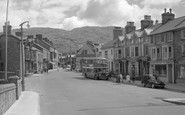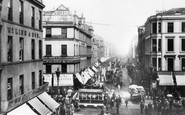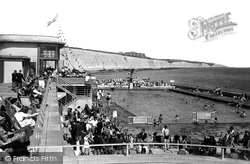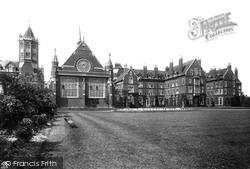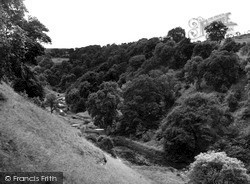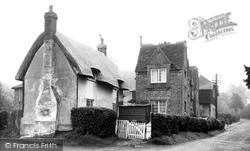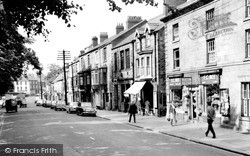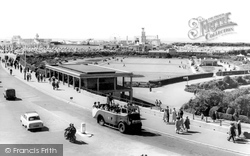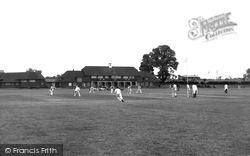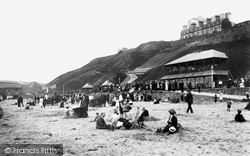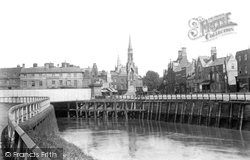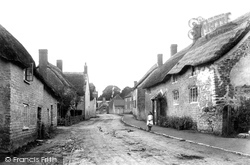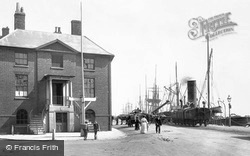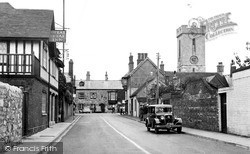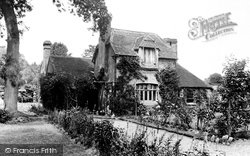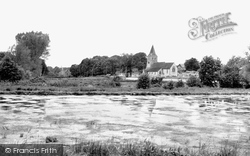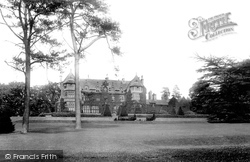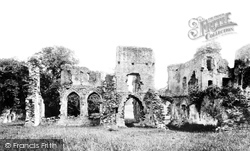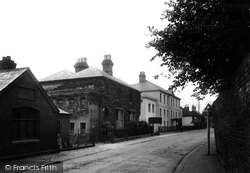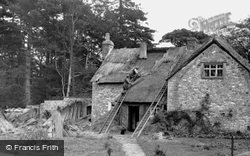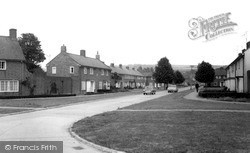Places
18 places found.
Those places high-lighted have photos. All locations may have maps, books and memories.
- Hythe, Kent
- Hythe, Hampshire
- Small Hythe, Kent
- Bablock Hythe, Oxfordshire
- Methwold Hythe, Norfolk
- Hythe, Somerset
- Hythe, Surrey
- Hythe End, Berkshire
- The Hythe, Essex
- Egham Hythe, Surrey
- West Hythe, Kent
- New Hythe, Kent
- Broad Street, Kent (near Hythe)
- Horn Street, Kent (near Hythe)
- Newbarn, Kent (near Hythe)
- Newington, Kent (near Hythe)
- Broad Street, Kent (near Hythe)
- Stone Hill, Kent (near Hythe)
Photos
360 photos found. Showing results 761 to 360.
Maps
101 maps found.
Books
10 books found. Showing results 913 to 10.
Memories
4,406 memories found. Showing results 381 to 390.
Doseley
When my dad Derick John Jones was born in 1944 he lived in a row of houses called Dill Doll Row or Dill Da Row as some people called them, they were situated at Sandy Bank, Doseley, just behind the Cheshire Cheese pub at Doseley. My dad lived ...Read more
A memory of Doseley in 1944 by
Brimington Boys Inthe 1970s
I have been away from Brimington for about 22 years, some of the area has changed but not much, I was shocked to see my old school gone. Brim boys was my last school before my first job as apprentice mechanic at ...Read more
A memory of Brimington in 1970 by
School Years
I also remember my first day at Ynysboeth Infants school, and unceremoniously being dragged there by my mother for the first time, because I didn't want to go to school. However, as I was happily greeted by the teacher on entering the ...Read more
A memory of Ynysboeth in 1940 by
Warners
As a young child I can remember several holidays taken at the Warners holiday camp at Seaton. The serious business of 'motoring down to Devon' was never taken lightly, lunch was prepared the night before to be eaten at Stonehenge, where one ...Read more
A memory of Seaton in 1965 by
Growing Up In Blaenau Ffestiniog. 1961
I was brought up in Blaenau Ffestiniog and lived there until 1971. The High Street photograph brings it all back. The shop on the extreme left of the photo was my mum's hairdressing shop and we lived ...Read more
A memory of Blaenau Ffestiniog in 1961 by
Glen Faba
Oh what lovely memories come flooding back, my mum and I would walk the winding river towpath from Glen Faba, where we lived, to Dobbs Weir, fish and minnow watching as we went along our way. In the summer my mum would get a hire row boat ...Read more
A memory of Hoddesdon by
919 Argyle Street 1961 To 1966
My grandparents lived at 919 Argyle Street for many years and as a child my mum, sister and I lived with them, it was cramped, very cramped, and when I had mumps I slept in grannie's bed in the "hole in the wall" and ...Read more
A memory of Glasgow by
Upbringing
I went to school first at Tondu infants and then to the Primary school, I remember when we had the school photographs taken in the play yard (where are they now?). I had a really great and happy childhood there living with all the ...Read more
A memory of Aberkenfig by
Happy Days
I was born in 1953 and lived in Nelson until 1978 when I moved to Scotland with my husband. I've lived in Hampshire for 26 years now. I used to live in High St and from the early 60s in Ashgrove Tce, by the bus station. The ...Read more
A memory of Nelson by
Bramley In The Years 1935 To 1941
Now 80 years of age I used to live with my Mum and Dad and brother Michael in Lincroft Crescent just above the Sandford estate. The houses were new and rather small though we were so happy there ...Read more
A memory of Bramley in 1930 by
Captions
4,899 captions found. Showing results 913 to 936.
This, the town's only open-air swimming pool, was recently demolished and replaced by the Marina and a supermarket: something of a poor exchange.
In 1977 the college was recognised by the University, when a four-year degree course in Education was introduced.
The cottage visible in the woods was used by the firm as a trademark, and appeared on many of their advertisements.
The wooded slopes of Middleton Dale, west of the village of Youlgreave and near the hamlet of Middleton-by- Youlgreave, offer a tranquil walk in beautiful surroundings by the banks of the frequently-weired
These 18th-century properties are undoubtedly some that were part of the benefit bestowed by the Moore family in Aspley.
By the 1960s, lead-mining in the area had long been consigned to history; it was replaced by quarrying and a growing tourist trade.
There are several villages in east Norfolk whose names end in '-by': this indicates that they were originally founded by the Vikings.
Thousands of coastal footpath walkers cross here by the stepping stones. On the right are a pile of fishing nets in front of the fishermen's hut.
The area was then landscaped and turned into a park, which was opened by the Prince of Wales in 1921.
At one time they owned 200 fishing smacks, but by the end of the 19th century the big takeover by steam was just around the corner.
The sporting facilities and club rooms were taken over by the London Fire Brigade Welfare Fund in the 1980s. It is still a very well used sports and social club.
Another very evocative view, taken in a world about to be shaken by the First World War.
Beyond the unsightly iron bridge can be seen the offices of the Great Northern Railway: later occupied by the Trustees Savings Bank.
In 1931 the streets were still lit by gas, as evidenced by the lamp on the left.
Loders was built in the domain of a Benedictine priory founded by the Norman grandee Baldwin de Redvers during the reign of Henry I.
In 1747 a valuable cargo of tea was seized by the revenue men and stored in the Custom House at Poole.
Yarmouth's original church was fired by the French raiders who twice attacked the town.
The spire, a timber one added in 1702, was replaced by the present low tiled pyramid in 1924, for the visual benefit of the church.
Seventy-five years ago, Overton's church tower was flat; nowadays its spire looks out over the River Test which rises close by. The
Now owned by the National Trust, this building was begun in 1869; it is a rare example of the architecture of William Burges.
The abbey was founded in 1155 by the Constable of Richmond Castle; the members of the Order were known as the White Canons after the colour of their habits.
By the turn of the century, it was able to boast a 'Grand tepid swimming bath ... Pure milk from own dairy farm.
Here the workmen are carrying out their highly-specialised craft surrounded by the tools of their trade. Note the bundles of thatch standing to the left of the picture.
This post-war council development can be dated by the medallions which were set into the front brickwork at the time of building.
Places (18)
Photos (360)
Memories (4406)
Books (10)
Maps (101)



